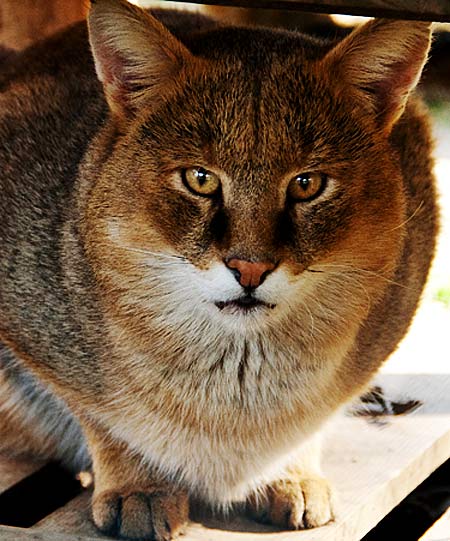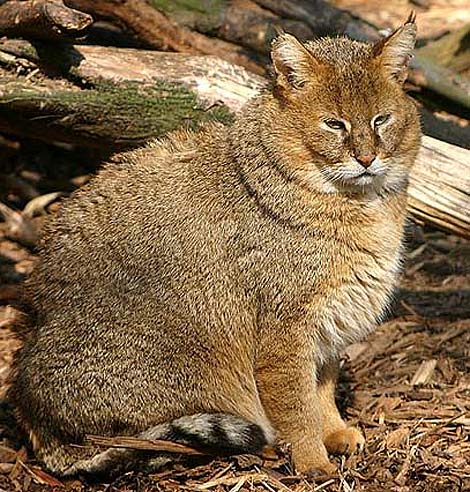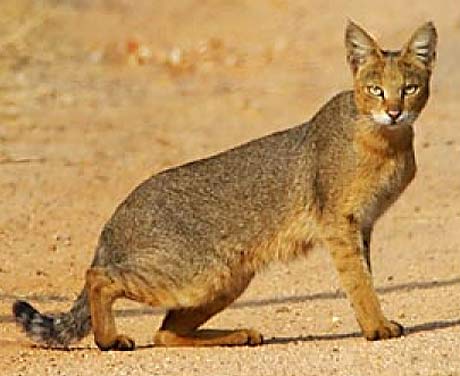Jungle Cat – Doesn’t Really Live in a Jungle

The medium-sized jungle cat lives in Asia from China and Vietnam in the east, all over India, west to the Nile river and north into Kazakhstan and Russia. A few have been found buried with ancient Egyptian mummies although they are not known to have been domesticated. There are a number of subspecies (9) divided across the broad habitat range. The general coloration varies from sandy or yellowish gray to grayish brown and tawny red, usually with some white underneath and/or on the muzzle and no distinct markings on the body. The tail has several dark rings and a black tip. The head and body length is around 20-30 inches (50 to 75 cm) and the tail length is about 10-11 inches (25 to 29 cm). It weighs 8.8-35 lbs (4 to 16 kg). It has been noted that the legs are proportionally the longest of any cat species in Southeast Asia, and are thus helpful in running down prey. It has longish ears with a tuft making them a bit longer.


The jungle cat isn’t really found in any jungles but is found in either woodland or open country, from sea level to elevations of 2,400 meters. It commonly inhabits grassy lowlands near rivers and lakes. It is a capable tree climber and will swim if it must. It makes a den in thick vegetation or in the abandoned burrow of a badger, fox, or porcupine. It can be active either by day or by night. The diet consists mainly of hares and other small mammals, and also includes birds, frogs, and snakes. It also comes across quite a few predators in its range such as other larger cat species, wolves, bears, and crocodiles. Mating usually occurs in Central Asia in February and March, but young kittens have been found in Assam in January and February. The gestation period is 66 days and the usual litter size is three to five young. Sexual maturity comes at the age of 11-17 months.

